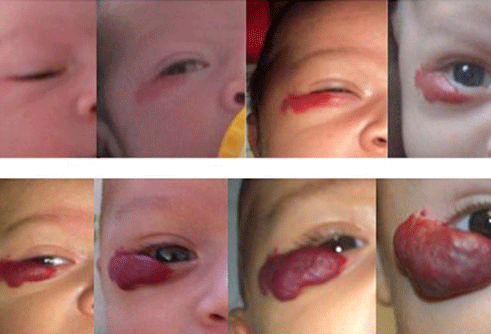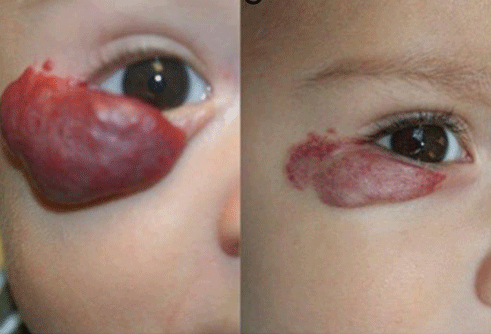Most rapid hemangioma growth may occur before 8 weeks of age
Infantile hemangiomas may grow most rapidly between 1 and 2 months of age, earlier than previously believed, according to a study.
Parents provided photographs every 1 to 2 weeks up to 6 months of 30 infants (22 girls) with infantile hemangiomas (IH). The photographs were analyzed for color of the IH, thickness of the IH and presence of local anatomic distortion. Prior research had found that 80% of IHs completed growth by 5 months, the mean age of presentation to a pediatric dermatologist. Researchers of the current study focused on IH growth before 3 months of age, noting presence or absence of precursors at birth, compiling mean scores per age interval and assessing an “optimal time for referral.”

Megha M. Tollefson
“We usually do not get to see the child for the first time until 4 to 5 months of age. We wanted to know if there was an earlier time we should see them to better prevent hemangioma-related complications,” researcher Megha M. Tollefson, MD, pediatric dermatologist at Mayo Clinic Children’s Center in Rochester, Minn., told Healio.com. “We thought that since parents usually take many pictures of their children in those first few months of life, there could be a wealth of valuable information gained from them.”
Each patient had one IH, with 28 located on the face and two located on the scalp and neck. The growth was nonlinear, with most rapid growth occurring between 5.5 and 7.5 weeks of age. Sixty-five percent of patients had a visible IH precursor at birth.
“Patients with high-risk infantile hemangiomas, particularly those on the head or neck, should be referred to a pediatric dermatologist or other appropriate subspecialist early in life, ideally by 4 weeks,” Tollefson said.
Study limitations included a small sample size and IH locations on the head and neck only, which may be because photographs are more likely to be taken of infants’ faces instead of other body sites, the researchers said.
“Depending on where the hemangioma is located, it could potentially have long-term impact,” Tollefson said in a news release. “We now have the possibility of preventing a lot of that.”

Figure 1. Photos show growth of a hemangioma from birth to age 3 months.
Source: Pediatrics

Figure 2. The same patient is shown at 2.5 months and 3 years old. Systemic therapy with steroids was begun at 2.5 months, followed by propranolol.
Source: Pediatrics
